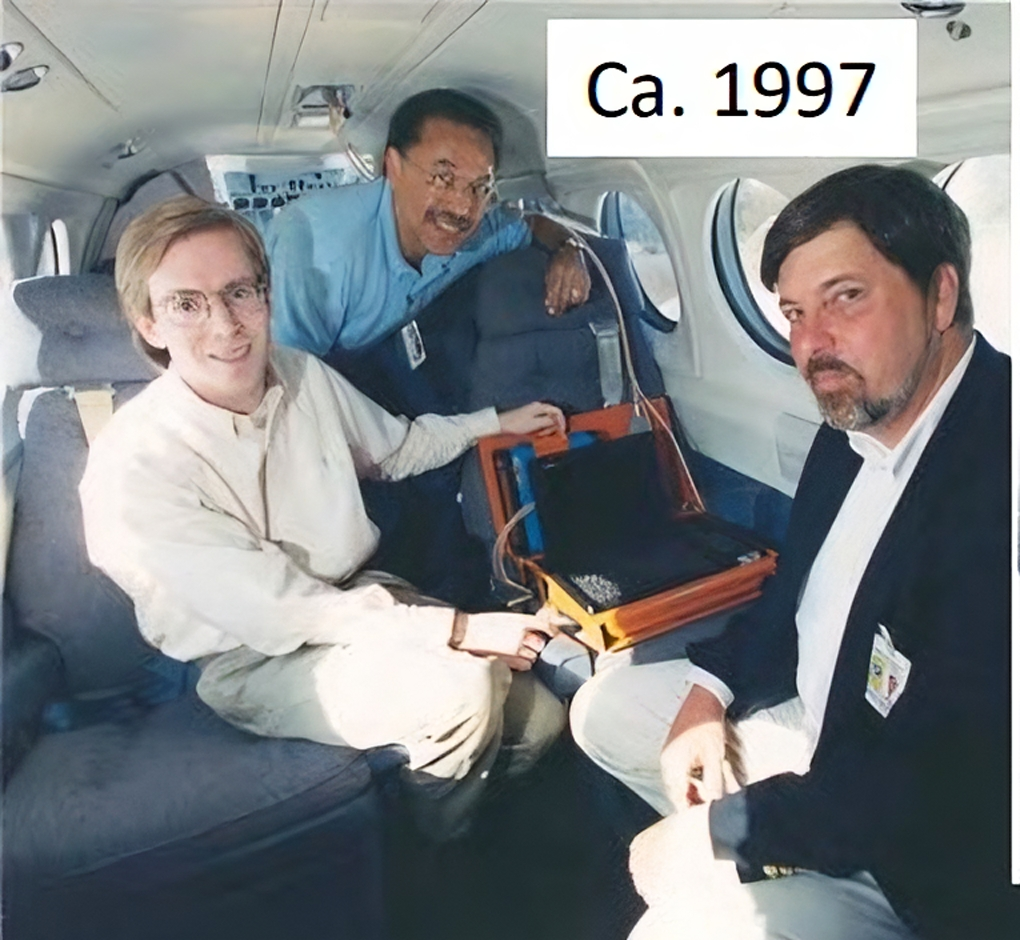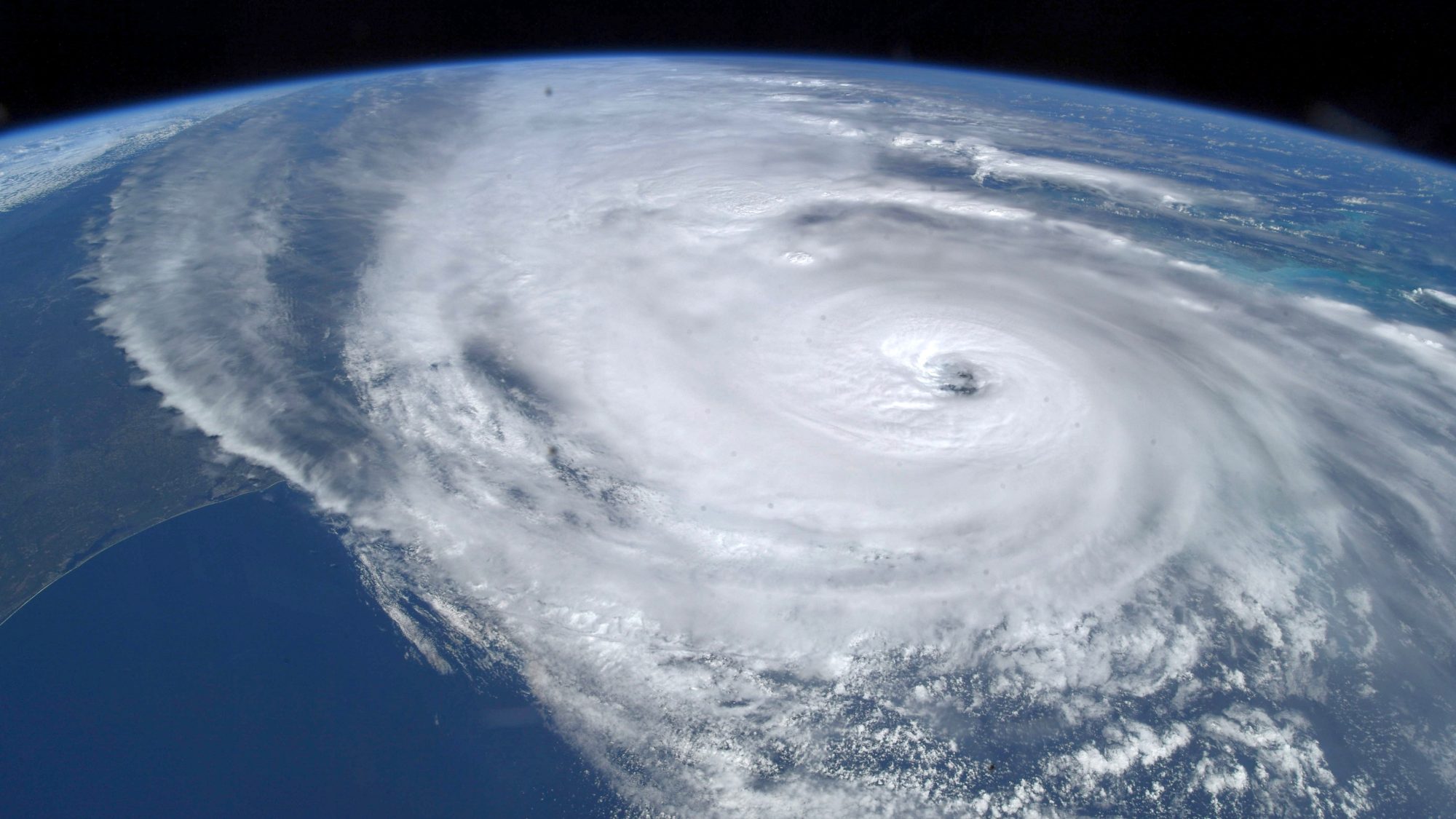Due to the strong correlation between the ocean wind and the scattering of GNSS-R signal. We can use it to measure the wind speed of tropical cyclones.
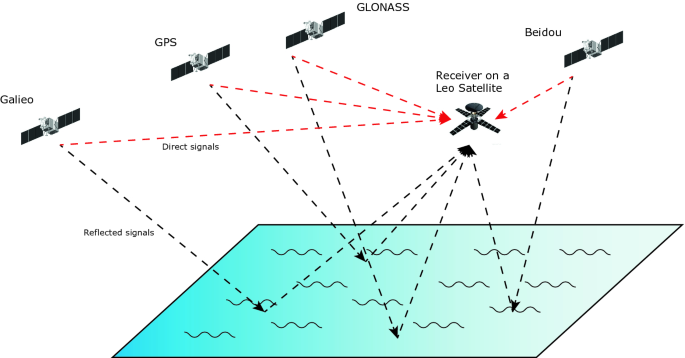
GNSS-R reflectometry
Basic Principle
When a GNSS signal is reflected from the ocean surface, it undergoes a process called bistatic scattering. The properties of the reflected signal depend on the roughness of the ocean surface, which in turn depends on the wind speed and direction. The roughness of the ocean surface is characterized by the Bragg wavelength, which is related to wind speed.
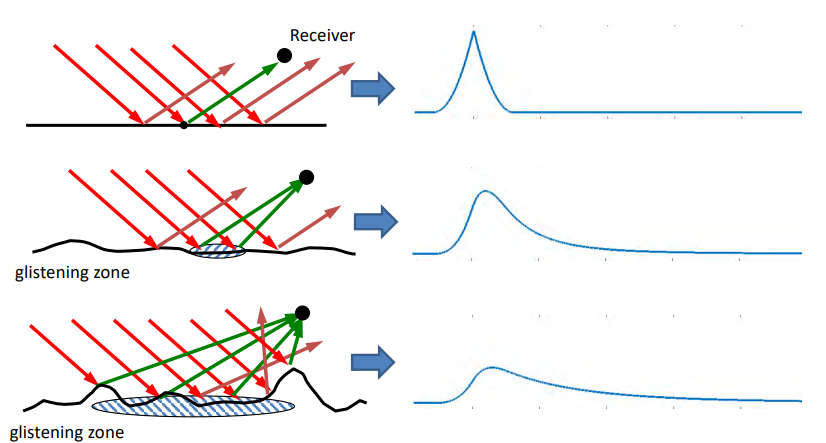

The GNSS-R wind retrieval process involves measuring the delay and Doppler shift of the reflected signal and using this information to estimate the Bragg wavelength. The Bragg wavelength is then related to the wind speed and direction using a mathematical model.
Due to the forward scattering geometry, GNSS-R reflectometry suffers from ambiguity issues. The team is trying to resolve this issue through a sparse array of receivers.
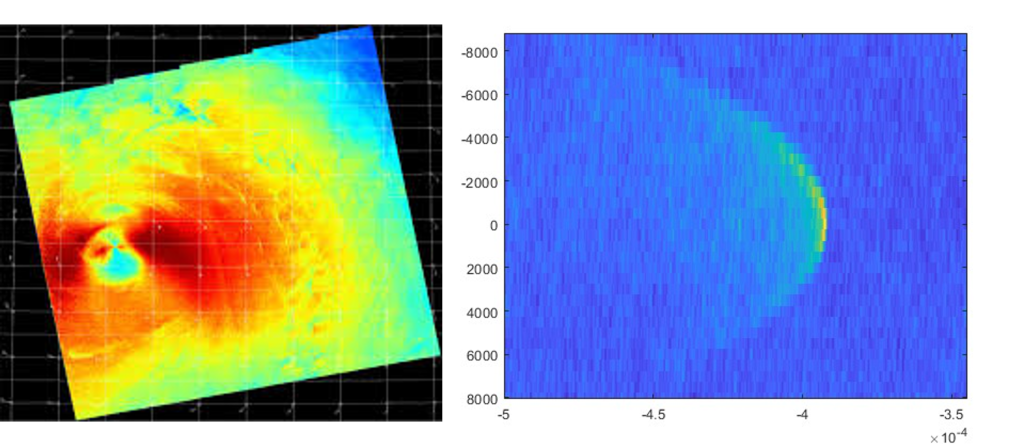
This is an image from synthetic aperture radar(SAR). With a high resolution of the wind field inside the hurricane.
This is the result of Delay Doppler Mapping (DDM). Where the curvature of the line has a strong correlation to the wind field.
Scattering of GPS Signal from the Ocean with Wind Remote Sensing Application
Applications

The early stage of the experiment happens on aircraft. NOAA hurricane hunters have carried the instrument for receiving GNSS-R signals and retrieved lots of important demonstrations of the feasibility of this technology.

GYGNSS (Cyclone Global Navigation Satellite System) is a NASA Earth science mission designed to study the inner core of tropical storms and hurricanes. The mission launched on December 15, 2016, and involves a constellation of eight microsatellites in a low Earth orbit.
The CYGNSS satellites use GPS signals reflected from the ocean surface to measure the wind speeds in the core of a tropical storm or hurricane. This information can provide crucial data for hurricane forecasting and understanding of how these storms intensify.
Link to CYGNSS
Prof. Garrison is one of the early pioneers in the GNSS-R ocean reflectometry with several highly impacted articles that lead to the success of the CYGNSS mission.
